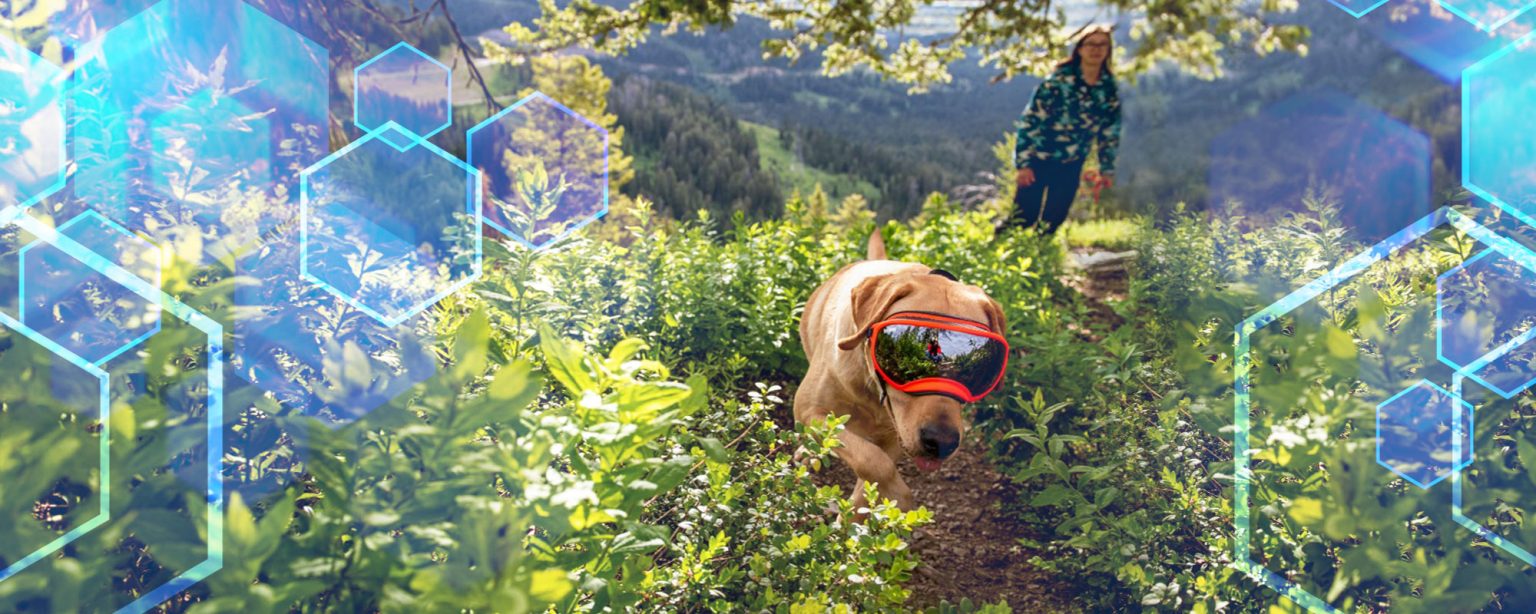It started as a normal afternoon. Angelica Petrovic was working on projects as part of the Business Affairs and Strategic Planning team at Idaho National Laboratory’s Advanced Test Reactor (ATR) when she received an unexpected call to search for a missing person in the mountains of Idaho.
A member of Northwest K-9 Search and Recovery, a nonprofit organization based out of Cody, Wyoming, Petrovic mentally prepared for the adventure. She went through her checklist: gear backpack, first aid and survival kits, GPS dog collar, water and snacks, outerwear, and – most importantly – Sawyer.
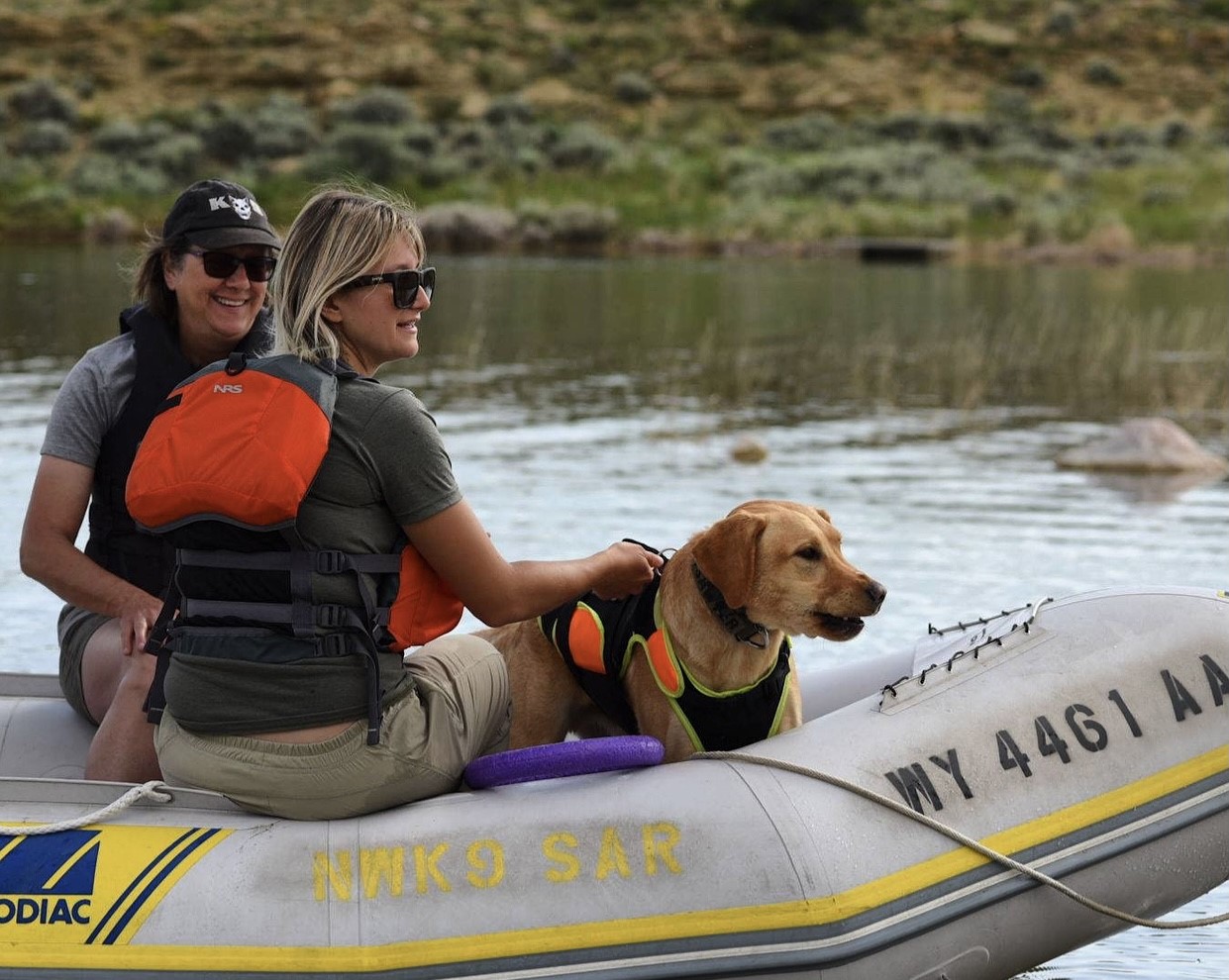
Sawyer is Petrovic’s search and recovery partner, a yellow Labrador retriever. This day, Petrovic and Sawyer drove for a couple hours and then boarded a helicopter.
They landed and began searching for signs of a missing person. With hours behind them and a few bumps and bruises, they didn’t find what they were looking for. There was no missing person in these mountains. This would be, as Petrovic and Sawyer know, an all-too-common occurrence in the search and recovery field.
SUPPORTING INL RESEARCH
Petrovic started as an intern in the summer of 2018 and is now a project coordinator at the world’s premier nuclear test reactor. In her role, Petrovic works with a team to strategically support and lead critical mission projects by developing work plans, reports, and other project tasks. She is currently in the pre-project planning stage for sustaining thermal irradiation capabilities at INL for decades to come.
Similarly, her search and recovery role requires strategic planning and teamwork. “When I am in the field training or searching, it is important to effectively communicate with Sawyer as a team,” Petrovic said. “Also, there are different stages of planning. These include assessing the situation, determining a safe action plan, and documenting information.”
“Working for ATR is vital to the future of nuclear energy,” Petrovic said. “Comparably, performing search and recovery missions with Sawyer is important to people’s lives.”
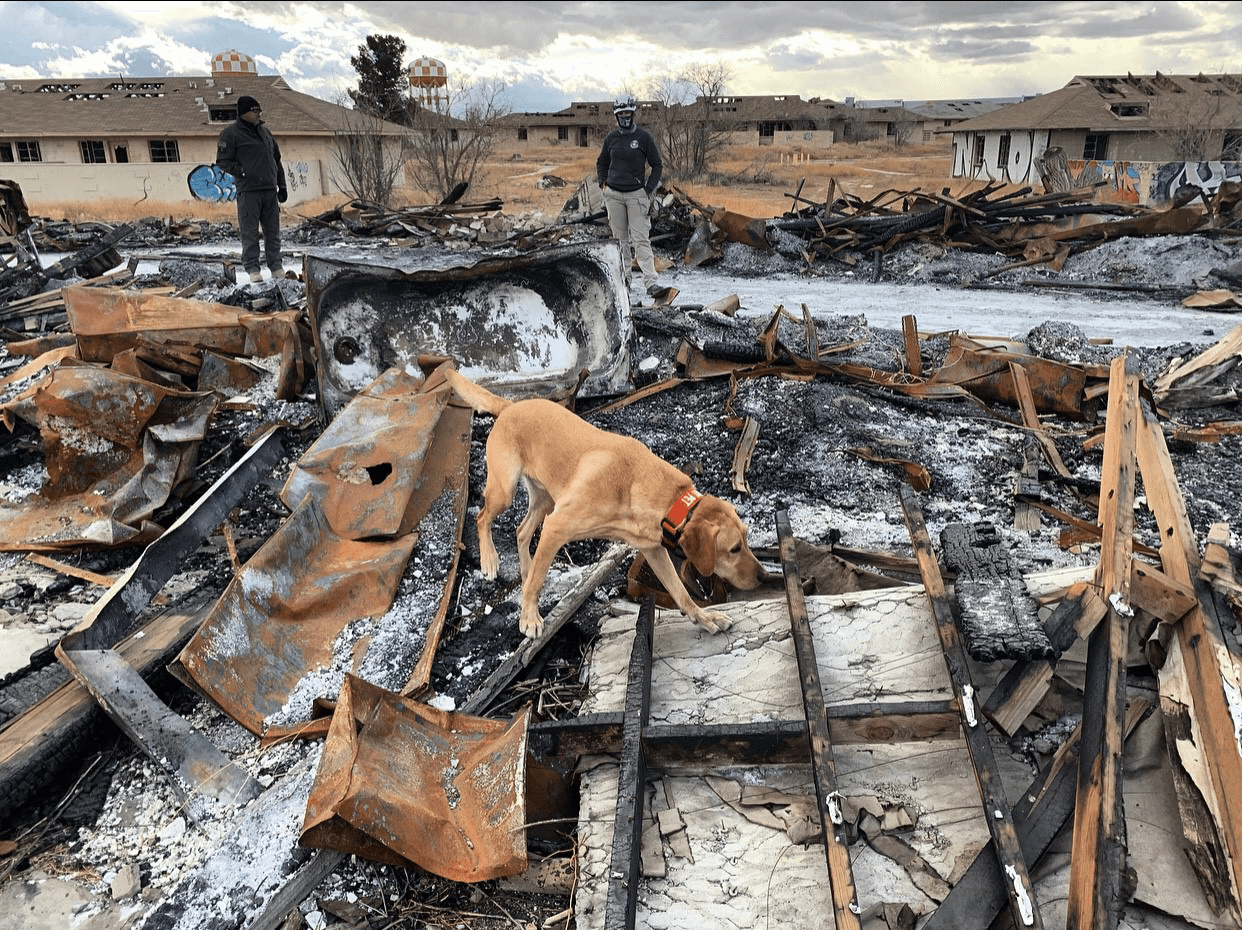
HOW THE JOURNEY BEGAN
Seven years ago, Petrovic volunteered with a nonprofit organization that trains dogs to help people with diabetes. At eight weeks old, Sawyer found his temporary home with Petrovic. He was training to become an alert dog for someone with Type 1 diabetes.
It turned out Sawyer was not the best fit for this kind of work due to his high drive, focused intensity and desire to work even under adversity. This led to Sawyer’s career change.
Once Petrovic adopted Sawyer, she began training him to become a search and recovery canine, known in the field as a K-9. This rewarding, yet dangerous line of volunteer work proved to be a challenging task that she was eager to pursue.
“Sawyer is always enthusiastic about our searches and trainings together,” Petrovic said. “When I started training him to be a search and recovery K-9, his excitement soared.”
After months of hard work, the duo began perfecting their craft. Petrovic and Sawyer are now nationally certified as an operational live find and human remains detection team. Although they are certified, training is an ongoing process that includes continually attending seminars and keeping their training fresh.
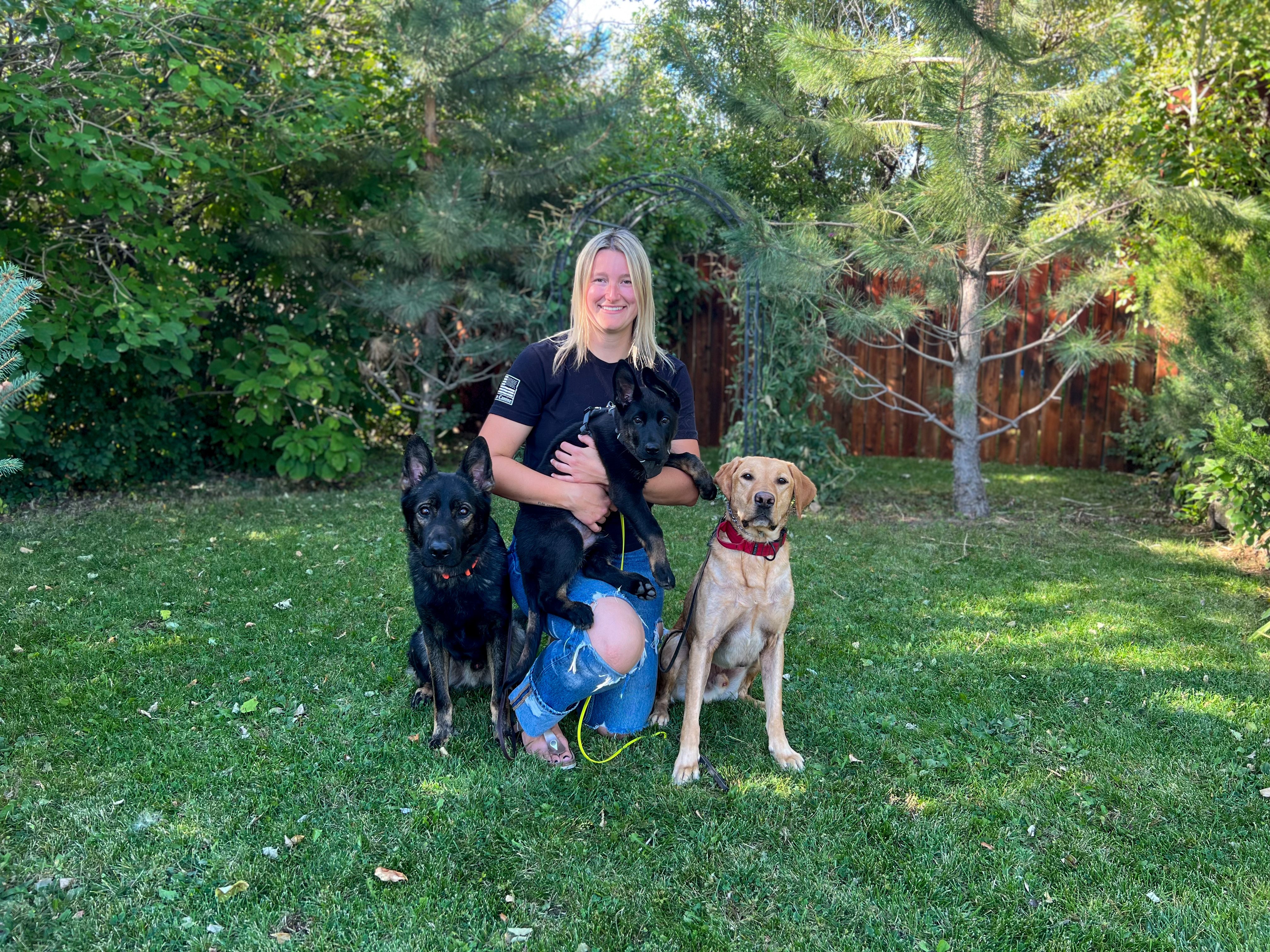
THE ART OF SEARCH AND RECOVERY
Search and recovery teams are called to locate and aid those in possible distress or imminent danger. Teams search for live people, but Petrovic and Sawyer typically locate deceased persons, which helps bring closure to families.
“When I first started training to become an operational team, I was ready for a new adventure,” Petrovic said. “After more research, I found myself diving further into the world of search and recovery. I started training in different areas, collaborating with team members, and learning about mapping, effective ways to use a GPS, basic survival and first aid skills.”
The pair is always preparing for a callout, when team members respond to requests for assistance. These events can range from someone getting lost during a hike or searching for someone who has been missing for decades.
“It’s rewarding to help the community and see the benefits and positive impact from my volunteer work,” Petrovic said. “There are many outdoor recreation opportunities in Idaho and the surrounding regions. Being a search and recovery team, we can make a big difference.”
The two have embarked on dozens of search and recovery efforts throughout the Northwest over the last six years. These include calls to Idaho, Wyoming, Montana, Utah, Oregon and Nevada.
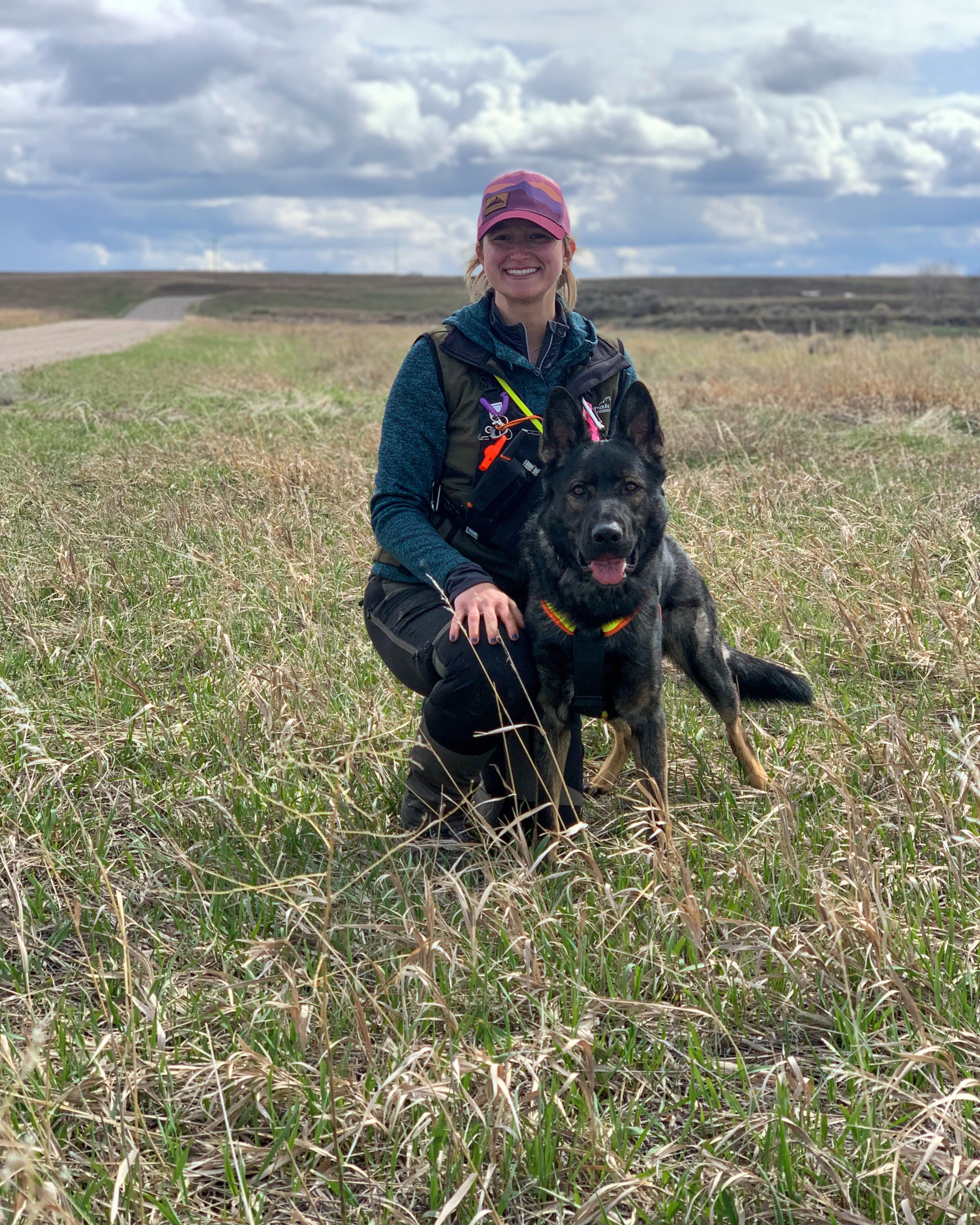
To continue providing volunteer services for the community, Petrovic recently certified her second K-9, a German shepherd named Jedi in human remains detection.
“I am looking forward to the continuing opportunity of helping those in need when it means the most,” Petrovic said.
Banner cover photo by Drew Smith.
Hobbies are fulfilling, and fulfilled people make more productive employees. Hobbies unearth hidden skills, alleviate stress, unite you with others and improve quality of life — all things that will help you function better at work. See other “Here’s Our Story” features about Idaho National Lab employees at inl.gov/news.

